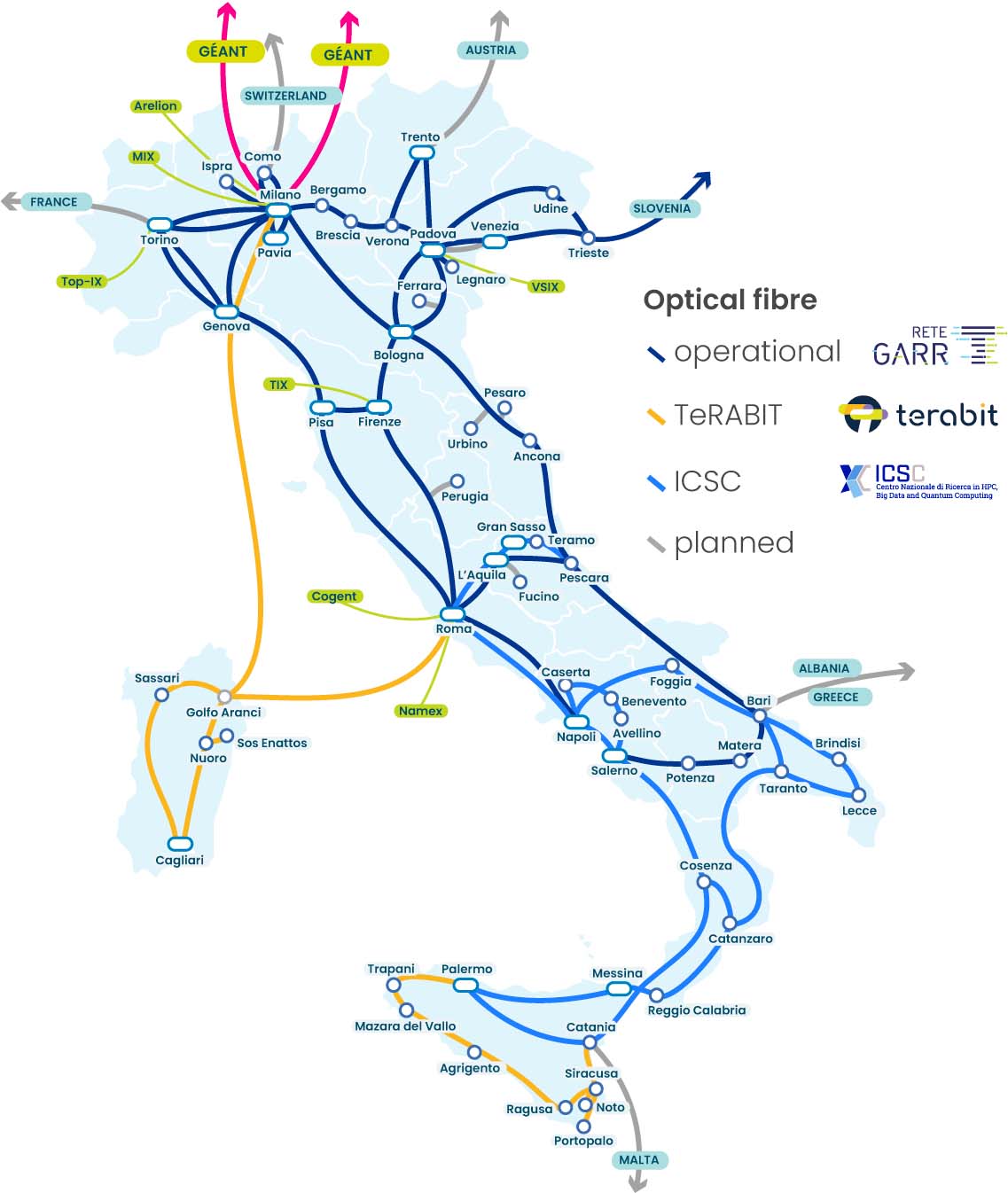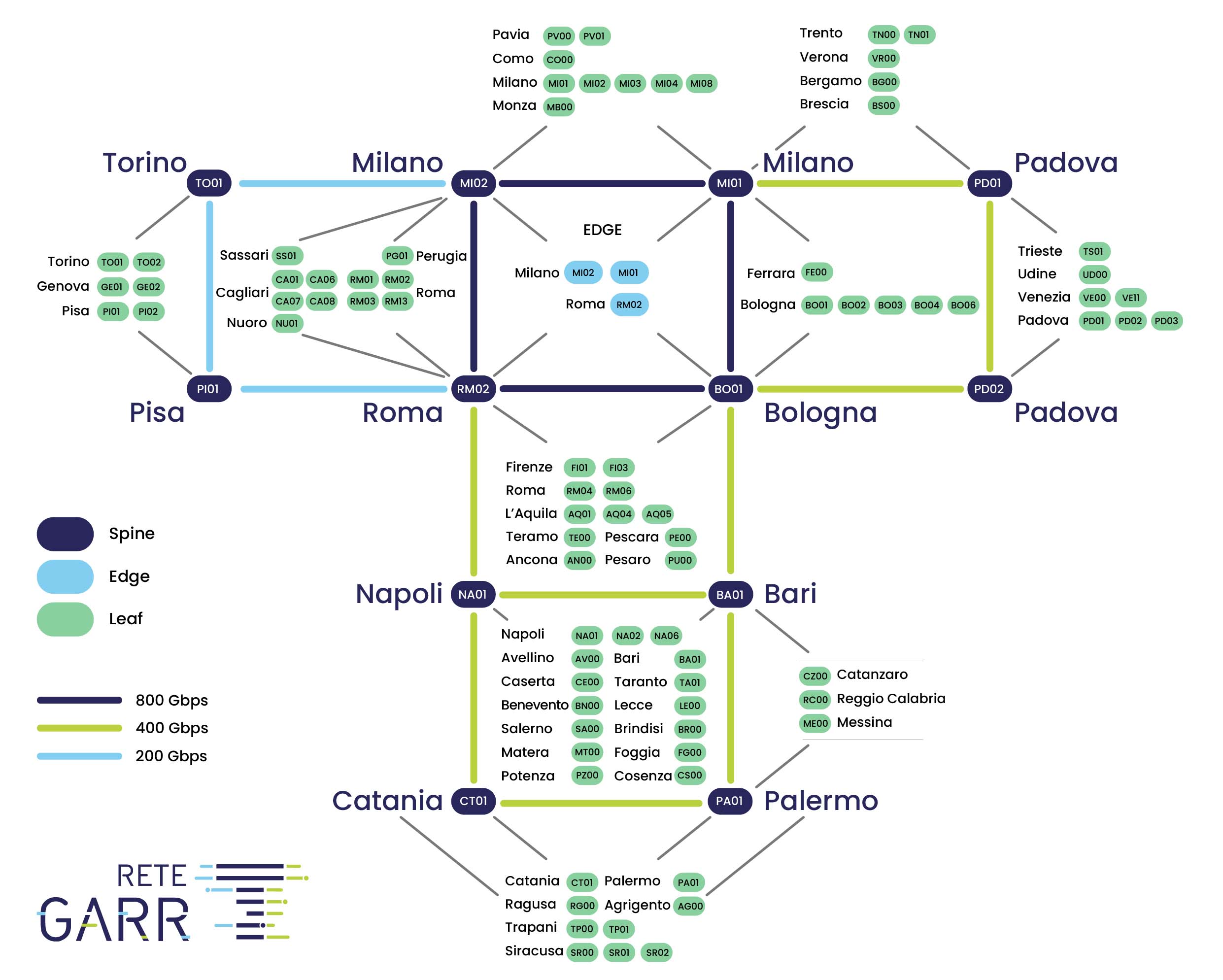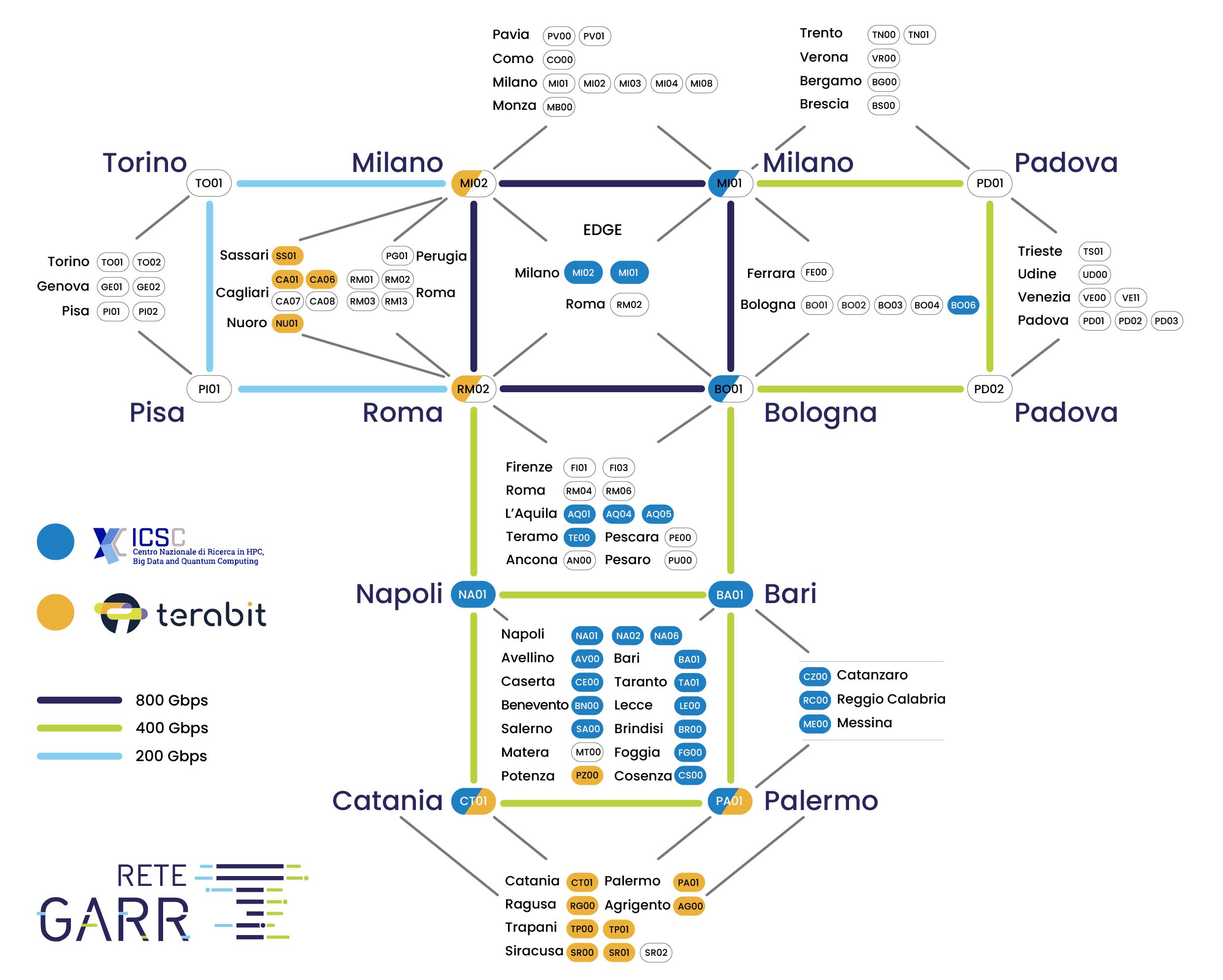Marco Ciuchini
Marco Ciuchini is a theoretical physicist and INFN research manager.
 He deals with the theory and phenomenology of elementary particles and has mainly worked on topics of quark flavour physics and electroweak physics in the Standard Model and beyond.
He deals with the theory and phenomenology of elementary particles and has mainly worked on topics of quark flavour physics and electroweak physics in the Standard Model and beyond.
Author of over 150 publications, he has worked in particular on the physics of first and second generation B factories and was co-founder of the UTfit collaboration, which studies the phenomenology of the Cabibbo-Kobayashi-Maskawa matrix. He is one of the developers of the HEPfit tool designed to systematically combine direct and indirect experimental constraints on theoretical models and used both in the field of flavour physics and electroweak physics at LHC and in the FCC physics case studies.
He began his activity at Sanità Section of INFN and later moved to the Roma Tre University Section, of which he was director from 2011 to 2019. He was a fellow of the theoretical division of CERN and a visiting scientist at CERN and at the Technische Universität München. From 2011 to 2015 he was a member of the scientific council of the Laboratoire de l'Accélérateur Linéaire in Orsay. He is currently vice president and member of the INFN executive council.
Massimo Bernaschi
Massimo Bernaschi graduated in Physics in 1987 with Giorgio Parisi working on the development of the INFN APE computer.
 He worked for 10 years in IBM's European Center for Scientific and Engineering Computing.
He worked for 10 years in IBM's European Center for Scientific and Engineering Computing.
He has received two Outstanding Technical Achievement Awards from IBM.
Since 1998 he has been Senior Technologist at the Institute for Calculation Applications of C.N.R.
He is Professor of Blockchain and Cryptocurrencies at the "LUISS" University of Rome.
He is government delegate at the European Defense Agency for the CapTech “Communication, Information System and Networks”.
He has developed open source software packages such as REMUS, OpenCapwap, SockMi, BitCracker.
In recent years he has been very active in programming Graphics Processing Units (GPUs).
In 2012 he received the title of CUDA Fellow from Nvidia for his achievements in this field.
He was part of the task force of the Ministry of Innovation for data management during the COVID-19 emergency.
Maurizio Tira
Maurizio Tira has been elected President of Consortium GARR for the period 2022/2025.
 He graduated with full marks in Civil engineering for soil protection and regional planning, he serves as Full Professor of Urban and regional Planning at the University of Brescia, where he was Rector from 2016 to 2022.
He graduated with full marks in Civil engineering for soil protection and regional planning, he serves as Full Professor of Urban and regional Planning at the University of Brescia, where he was Rector from 2016 to 2022.
He teaches Urban planning and risk mitigation and Environmental ethics in the master's degree course in Civil and Environmental Engineering.
He is a member of the Doctoral Board in Civil and Environmental Engineering, International Cooperation and Mathematics and of the National PhD Course in Sustainable Development and Climate Change. Past-President of the Italian Society of Urban Planners and the National Centre of Urban Studies at the National Council of Engineers, he is member of the Board of the Academy of Science, Letters and Arts in Brescia and Corresponding Member of the Academy of Science of Bologna. He acts as President of the UNIBS Foundation, member of the board of the ”European University Association” and the Administration council of the “National Centre of Hyper Computing, big data and Quantum Computing”, as appointed by the Minister of University and Research.
He is expert member of the European Transport Safety Council and the Transport Research Committee of the International Transport Forum at OECD, as well as expert in the Group on Urban Mobility at the DG MOVE – EU Commission.
He coordinated and participated in several EU funded projects, about urban planning, sustainable mobility and planning in hazardous areas. Maurizio Tira is Author of more than 270 publications.
In December 2020 he has been appointed Commander of the Order of Merit of the Italian Republic.
GARR-T Network
GARR-T, as in Terabit, is the new generation of GARR network. It is an evolution of the production network, including innovative features.
GARR-T is a cutting-edge network built around the users’ needs and designed to be future-proof. Key main benefits are the ability to adapt over time, rapidly scale-up and grow in terms of capacity, capillarity and provided services.
A new level of automation, enhanced reliability and measurability through advanced monitoring systems are GARR-T’s key innovations.
GARR-T in figures
The numbers of the new network are substantial: 700 km of new fibre optic sections are planned, 42 optical PoPs over approximately 6,000 km of optical fibre and 9 new metropolitan PoPs. 6 more cities will have a double PoP, to ensure redundancy and increase reliability.
The full infrastructure will be 10 times more powerful: the backbone capacity will grow from current 3.5 Tbps to 40 Tbps, while the aggregated access capacity will increase from 2 to 10 Tbps
The technologies
The new network is built with 2 key components: the packet layer and the optical layer.
EVOLUTION FROM THE CURRENT GARR-X NETWORK TO THE NEW GENERATION GARR-T NETWORK
The packet network will undergo a complete renovation, with the replacement of all network equipment now in operation over the national infrastructure. The new architecture is based on the data centre model, i.e. with Spine and Leaf nodes for access aggregation and Edge nodes for end points at the users premises. While ensuring uniformity and equal access to services, this model facilitates the reach of the network, ensuring optimal agility to smaller nodes and leaving the greater impact in terms of space and energy consumption to core nodes only.
Optical network: flexible, efficient and sustainable
The optical network features important innovations fostering flexibility, adaptability to user needs and the creation of new services. It is based on a partially disaggregated model, where fibres and devices are seen as different components whose combination produces the optical transport hardware infrastructure. This model ensures both efficiency and long-term sustainability, as it separates the fibre and the equipment lifecyles, allowing to operate the network independently from a specific network equipment supplier, thus avoiding a technological lock-in. This innovative model is implemented through an Open Line System (OLS) and the use of optical fibres and of an advanced management and control software system. The result is an active infrastructure that is capable of routing any optical signal. The OLS technology caters for the flexible management of the optical spectrum, enabling spectrum sharing and the development and offer of innovative applications, such as time and frequency transport or Quantum Key Distribution.
New services
The GARR-T network is designed to offer users new services and empower them with the ability to configure and manage them independently, according to their specific needs.
Distributed computing
One of the most distinctive innovative services offered by GARR-T, is Data Centre Interconnection, i.e. the geographical interconnection of data centres as if they were in one location by using direct optical links. By leveraging the partially disaggregated model, the connected sites can directly interface with the Open Line System and create a dedicated optical channel (end-to-end). Thanks to the use of highly specialised and modular equipment, this feature can be offered at relatively low costs, allowing for savings in terms of space and energy consumption.
This model responds to the emerging computing model for large scientific collaborations known as “Data Lake”, in which data access and management takes place locally, while computing resources can be geographically distributed.
Optical paths and spectrum sharing
GARR-T foresees the introduction of optical paths (lightpaths) and spectrum sharing features, seen as the glue for new applications and technical opportunities for users. These services will be a key to seamless interconnection with international infrastructures, for example by making available a portion of the physical infrastructure through spectrum access.
Spectrum sharing is a key enabling factor to extend optical network functionalities wherever economic and geographical constraints are present, as in the case of submarine cables, or more generally of areas with limited or difficult coverage with fibre optics.
Monitoring and automation for a more reliable network
Thanks to the introduction of automation mechanisms, the network management in GARR-T is more efficient in the timely identification of possible malfunctioning and immediate reconfiguration at need.
Automation is fundamental in the new network: processes that used to be require the human intervention are now completely revised . An abstraction model is adopted, that represent the network according to its functions and not the sum of individual components. It is an event-driven model, with the ability to adapt to constant change, similar to the intention-driven model adopted in the ICT and cloud world to automatically evolve services.
Service implementation streamlining, for all needs
A new feature of GARR-T is the streamlining of service implementation. By leveraging a “containerised” approach to virtualisation, processes are broken down into many agile micro-services thus simplifying the service implementation. GARR-T can count on a distributed cloud infrastructure, with mini data centres being implemented in the geographical network nodes. These mini data centres will host both enabling infrastructure services (monitoring, security, AAI, analytics tools) and application services. Among the latter, we plan to offer virtualised network features, such as firewalls or Intrusion Detection Systems, in order to provide support to users who have fewer resources or technical skills.
Map of the GARR-T network with the interventions of the PNRR projects
Map of the GARR-T network with the interventions of the PNRR projects

OCRE Cloud Framework
In addition to offering its own cloud infrastructure devoted to the research and education community, GARR makes available to its users access to the OCRE Cloud framework, a set of European framework agreements for the simplified procurement of commercial cloud services in IaaS (Infrastructure as a Service), PaaS (Platform as a Service) and SaaS (Software as service) modes.
The OCRE cloud framework is designed to facilitate the use of the cloud in those situations where it is not possible or convenient to use in-house or dedicated solutions, such as the GARR cloud, for one's cloud computing needs, or when additional resources are required (e.g. to absorb computing peaks).
Purchasing public cloud services can be a complex and time-consuming process. The OCRE Cloud Framework aims to simplify these processes by offering the research and education community a portfolio of cloud suppliers across Europe and ready-to-use service agreements.
The framework, created by the European OCRE (Open Clouds for Research Environments, 2020-2024) project consortium led by GÉANT, builds on GÉANT's previous IaaS framework, and offers a wider range of services, enabling access to commercial digital services for research activities.
How to access the services
The framework is open to higher education institutions, universities and research organisations that are part of the GARR network.
In order to simplify the process of service selection and purchase, OCRE has published a Catalogue where users can navigate a map of Europe showing the services are available in each country. Each service is presented through a tab that includes a link to detailed information about the platform and a contact email address that can be used to request an offer.
The role of GARR
GARR, as the National Research & Education Network (NREN), acts as a referrer between its community and the OCRE cloud framework, making the framework agreements available in Italy to the institutions that are part of its community.
GARR, however, has no involvement in the relationships between users and providers and does not carry out specific communication and promotion activities of the services made available to users of the Italian research and education community by OCRE providers. All information actions and interactions must take place directly between users and suppliers.
It should be noted that OCRE is a four-year European project, which started on 1 December 2020 and the framework will remain valid until the end of the project, i.e. until 30 November 2024. Furthermore, contracts can only be concluded in English.
The list of OCRE suppliers for Italy can be consulted on the project website and for further information and support please write to
Further information
GARR Scholarships
"Orio Carlini" Scholarships
Ogni anno GARR mette a disposizione delle borse di studio, intitolate al prof. Orio Carlini, destinate a 10 giovani talenti che si occupano di tematiche legate alle infrastrutture digitali e al loro uso in ambito multidisciplinare.
Queste borse di studio sono volte alla realizzazione di un progetto di ricerca della durata di 12 mesi su argomenti individuati dallo studente.
I progetti possono essere svolti presso enti ed istituzioni scientifiche, culturali ed accademiche collegate alla rete GARR oppure presso la sede di Roma del Consortium GARR.
Available Scholarships
GARR Technological Scholarships
Il GARR Innovators Programme nasce con l’obiettivo di offrire a studenti magistrali e giovani ricercatori nel settore ICT l’opportunità di fare un’esperienza di studio e ricerca direttamente presso le nostre sedi, approfondendo temi definiti da GARR nell’ambito della rete e della trasmissione dati, del cloud e delle infrastrutture di calcolo e dati.
Le proposte sono registrate e valutate in base all’ordine cronologico di presentazione e le borse tecnologiche sono assegnate fino ad esaurimento dei fondi disponibili.
Available Scholarships
Technological Scholarships arguments
List of themes for study and research projects useful for obtaining a GARR Technology Scholarship
- IPv4 and IPv6 packet transmission networks;
- Network monitoring;
- Software Defined Network;
- Virtualization;
- Network security and contrast of DOS and DDOS;
- Optical Transmission Systems;
- Use of submarine fiber cables;
- New Optical Network services;
- Near-real-time geographic data transport systems;
- Transmission of time and ultra-precise phase signals;
- Data Lake systems;
- Cloud Open-Stack and Container technologies;
- Federation of Cloud Infrastructures;
- Federation of data infrastructures;
- Collaborative and sharing platforms;
- Innovative Cloud Services.
Annual Report - Application services
List of graphics for application services
Mirror: annual traffic volume
The graph shows the total volume of data transferred from the Mirror to the outside.
Filesender: sent files
The graph shows the number of files sent in a year using the Filesender service.
Speedtest: measurements made
GARR Speedtest measures the capacity, latency and jitter of a network connection.
The graph shows the number of measurements made and the number of unique IP addresses they came from.
Keep reading
The information contained in this document is taken from the "2021 Final Budget" and from the Report on the activity carried out and results achieved 2021 approved by the GARR Shareholders' Meeting in May 2022.
Annual Report - Communication
List of graphics for GARR communication
GARR News: page views
The graph shows the trend in the number of page views of the online edition of GARR NEWS magazine.
Keep reading
The information contained in this document is taken from the "2021 Final Budget" and from the Report on the activity carried out and results achieved 2021 approved by the GARR Shareholders' Meeting in May 2022.
Annual Report - GARR staff
List of graphs for GARR Staff
Type of activity
The graph shows the breakdown of personnel by activity performed. Technical activities are related to the institutional mission. Administrative activities are carried out in the areas of administration, secretariat, training, communication, web and multimedia. R&D is structured as a cross-cutting activity, tapping into the personnel of all GARR departments and services.
Mission related activity
The chart shows the detail of technical activities carried out by GARR staff.
Keep reading
Application services Communication
The information contained in this document is taken from the "2021 Final Budget" and from the Report on the activity carried out and results achieved 2021 approved by the GARR Shareholders' Meeting in May 2022.
Annual Report - Network and access services
List of graphs for network and access services
- NOC: faults and maintenance
- SCARR: vulnerability scans
- CERT: security tickets handled
- NIC & LIR: Registered domains and new networks allocated
- IDEM: Joining to Federation
- eduroam: Wi-Fi access in roaming via eduroam
- eduroam: connected devices in roaming in Italy
- CS: Released digital certificates
NOC: faults and maintenance
The graph shows the number of tickets (faults and scheduled maintenance) managed by the NOC (Network Operations Centre).
SCARR: vulnerability scans
The graph shows the number of vulnerability scans performed with the SCARR service.
CERT: security tickets handled
The graph shows the security tickets handled by GARR CERT.
GARR CERT assists users in managing network security incidents and in implementing measures aimed at their prevention.
NIC & LIR: Registered domains and new networks allocated
The graph shows the number of interventions made on .it and .eu domain names and the number of IPv4 and IPv6 networks assigned to entities in the GARR network.
IDEM: Joining to Federation
The graph shows the number of organisations that joined the IDEM federation. Institutions connected to the GARR network can join the IDEM federation as members. Third parties and other organizations can join as partners, to provide own services to the federation members. The graph shows also the trend of registration of Identity Provider and Service Provider.
eduroam: Wi-Fi access in roaming via eduroam
The graph shows the number of successful authentications from Italian users roaming on the national and foreign territory.
eduroam: connected devices in roaming in Italy
The graph shows the percentage of devices connected while roaming in Italy.
CS: Released digital certificates
GARR Certification Service issues free personal and server digital certificates to the Research & Education community.
The graph shows the trend in the number of digital certificates issued.
Keep reading
The information contained in this document is taken from the "2021 Final Budget" and from the Report on the activity carried out and results achieved 2021 approved by the GARR Shareholders' Meeting in May 2022.





